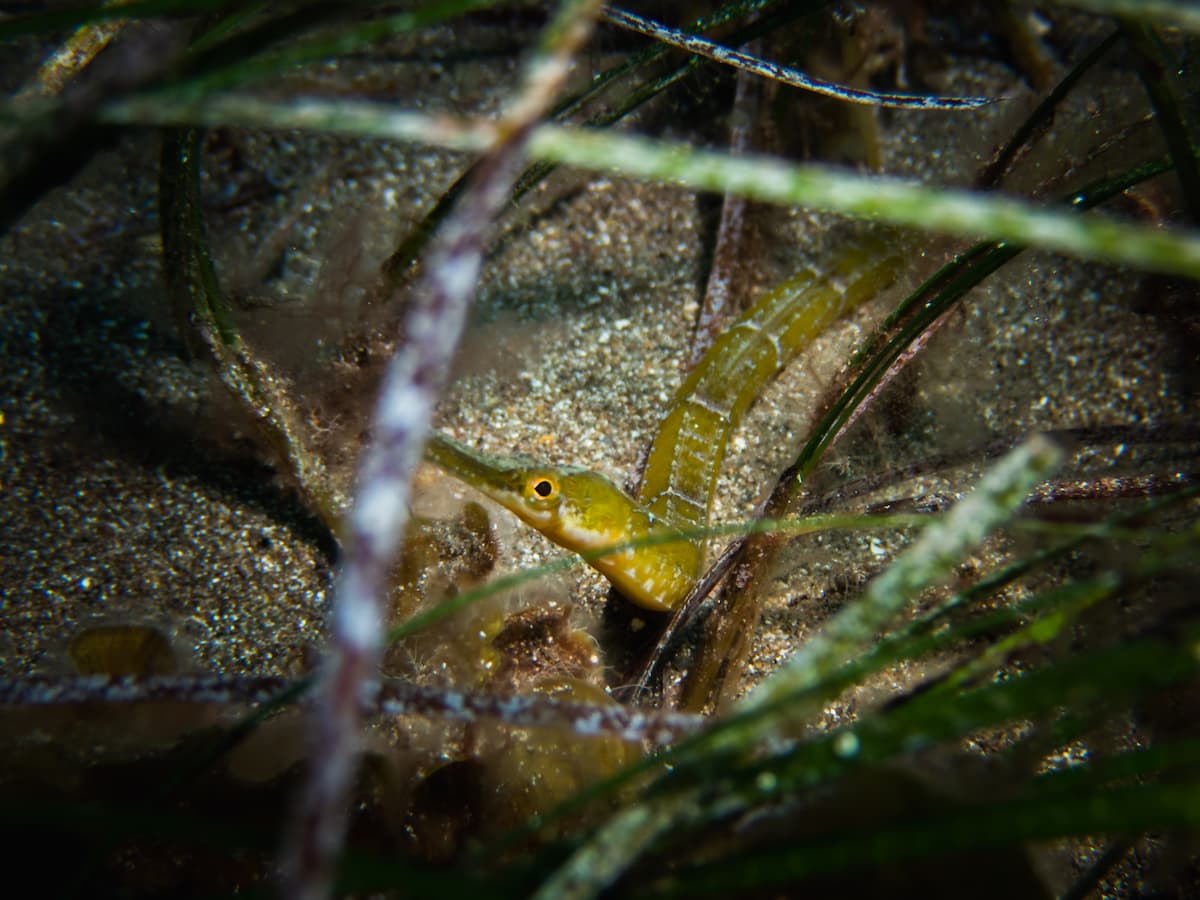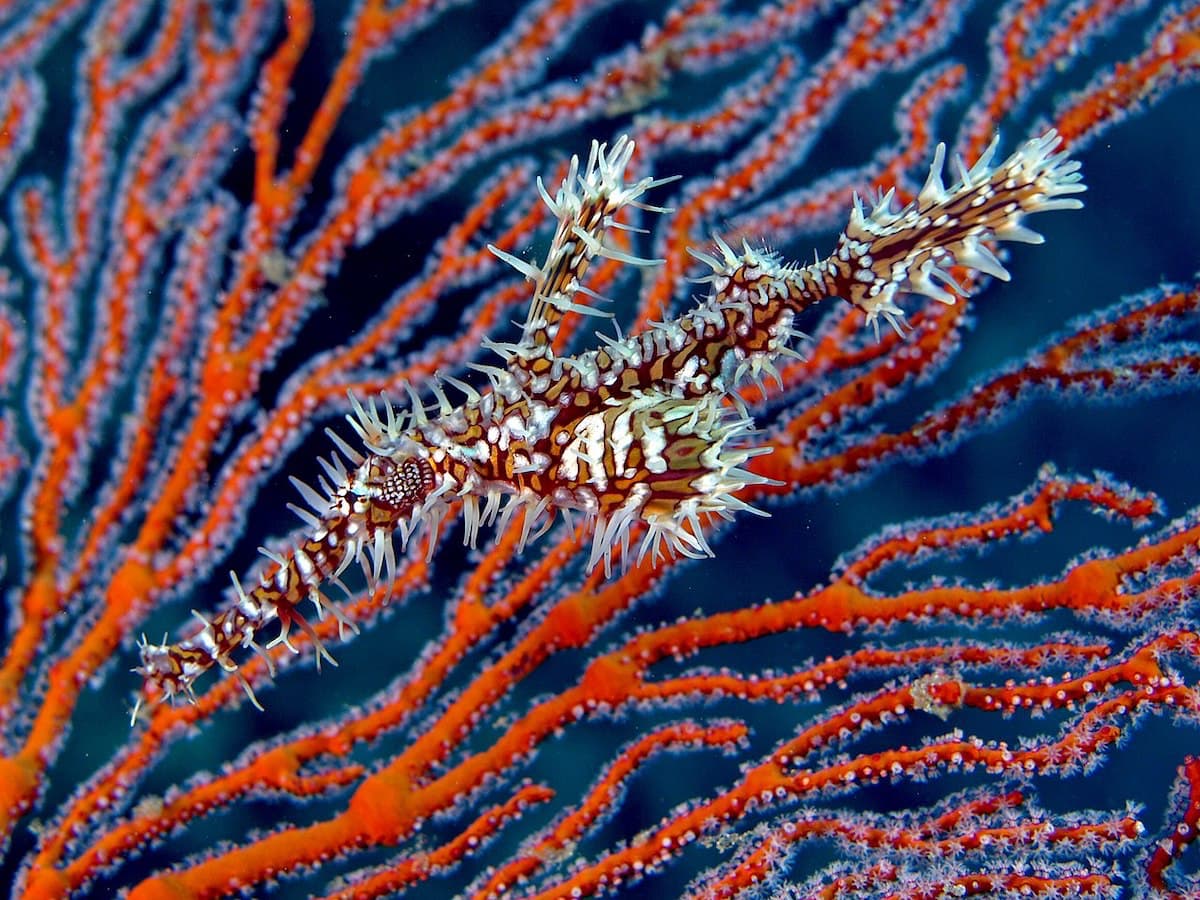Cheers to Pipefish
These seahorse relatives will swim into your heart

Ask anyone on the street, and chances are they can tell you about seahorses. You don’t need to be an expert to recognize these small, odd-looking critters—their long faces are really unique in the ocean. Or are they?
Pipefishes are close relatives of seahorses and seadragons, but they don’t get nearly the amount of attention. Today, we’re going to change that! Here are a few things to know about pipefish.
Pipefish are (almost) everywhere
Pipefish are in the family Syngnathidae, which also contains seahorses and seadragons. There are more than 225 species of pipefish found all over the world, from the tropics to the subarctic (but you won’t find any at the poles, unfortunately). There are a few freshwater species, but most are marine.
One species, the Atlantic snake pipefish (Entelurus aequoreus), exhibited a curious range shift in the early 2000s. These fish used to be an unusual sight in northern Norway, but in 2002, they expanded their range pole-ward. Suddenly, people were seeing these “rare” fish in big numbers, likely due to changes from warming waters. Their numbers in northern waters dropped again by 2007, but scientists are keeping an eye out to see if their populations fluctuate again. This species is not alone in that distinction—scientists have seen plenty of range shifts in the face of climate change.
Pipefish shape is important
Pipefish might not have the flashy body shape that their seahorse cousins have, but their shape works for them. They have long, slender bodies—as if you stretched out the coiled body of seahorse into a straight line. Many species hang out in seagrass beds or coral reefs where they can blend into swaying grasses and soft corals.
Some pipefish are quite small; the dwarf pipefish, for example, only grows to about four inches. The brushtail pipefish, on the other hand, can grow to 25 inches. They use their elongated mouths to suck up tiny prey items like small crustaceans.
Boo! There are ghost pipefish

Ghost pipefish look similar to pipefishes but are actually in a different family. (I know, taxonomy is confusing.) They’re in the family Solenostomidae, which has six species that are mostly found in the Indo-Pacific region.
Ghost pipefish look drastically different than their more streamlined pipefish cousins. Many have intricate camouflage that they use to blend into corals, crinoids and other structures on the sea floor. The ornate ghost pipefish, also known as the harlequin ghost pipefish, can have the bright red “stalk” and flowing white “tentacles” of a soft coral. The robust ghost pipefish has a rich brownish-green or reddish color that perfectly blends with algae or leaves.
Pipefish dads have a unique role
Like seahorses, pipefish flip the script in reproduction. Females lay their eggs in the male’s brood pouch where he fertilizes them. Then, he will keep them safe and sound until the baby pipefish are ready to hatch. Location of brood pouches vary for different species; snake pipefish, for example, have the pouch on their stomachs where broadnose pipefish have it on their tails. In many species, the males can provide nutrients and oxygen to their offspring straight through the pouch.
Pipefish face changing threats
Pipefish are a diverse group, and some species are more threatened than others. The estuarine pipefish, for example, is found in South Africa and is critically endangered. It was so rare that scientists declared it extinct in 1994 before it was rediscovered in 1996. But generally, pipefish are at risk from threats like pollution, climate change and habitat loss that affect many ocean species.
Learn about Ocean Conservancy’s efforts to combat climate change and protect unique animals like pipefish.